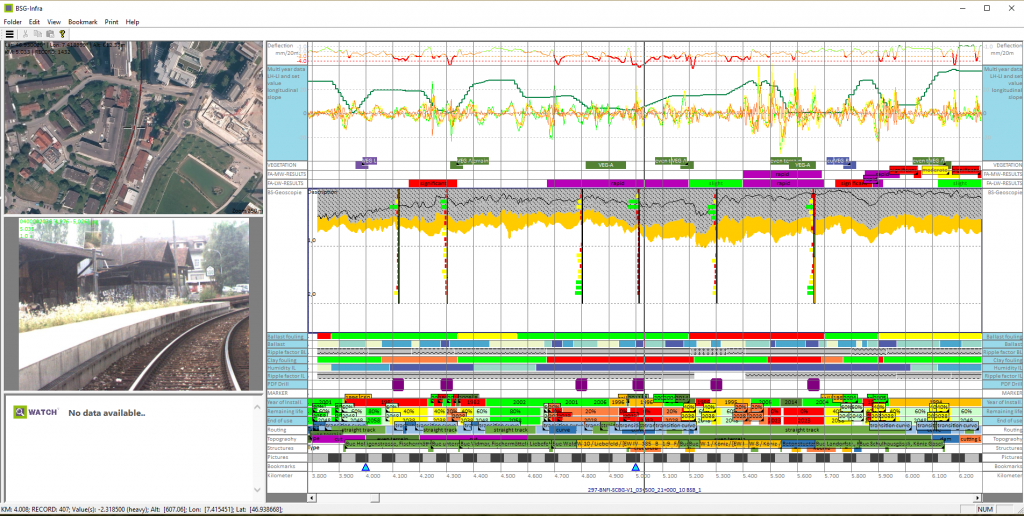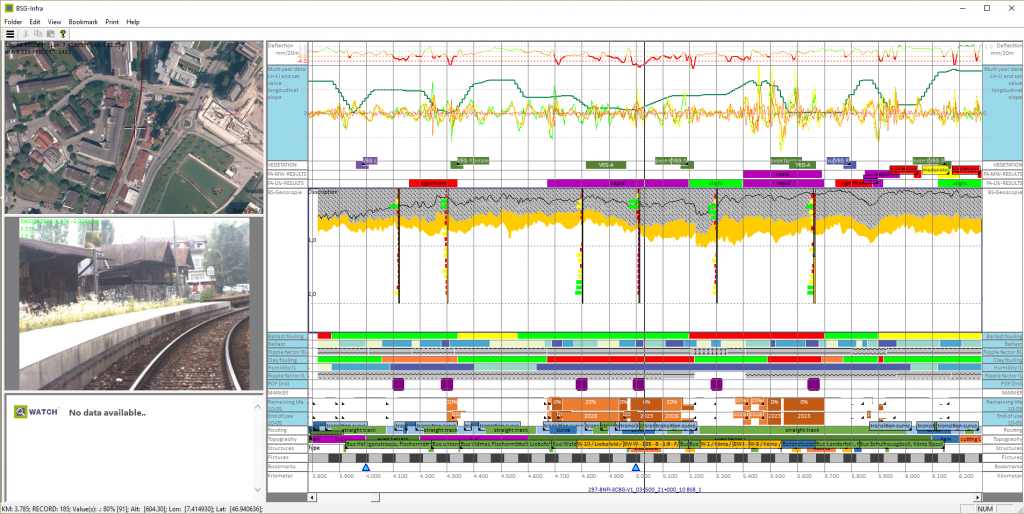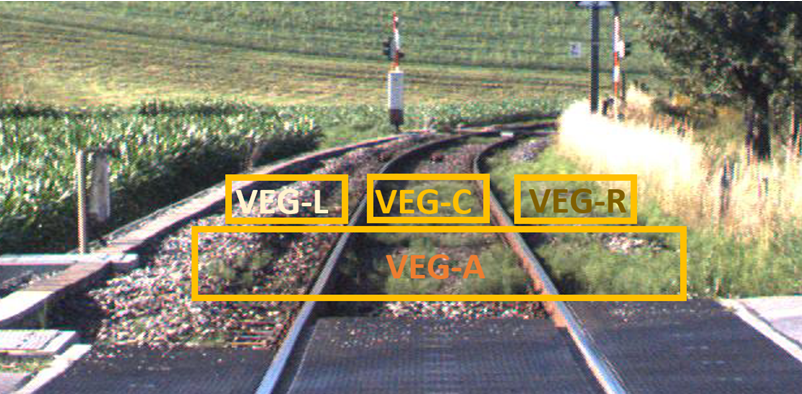
The following data channels are used for the evaluation of the remaining useful life:
Deflection measurement – image analysis “vegetation” – results of the fractal analysis – results of the evaluation of the georadar measurements – type of sleeper – alignment – topography and information on engineering structures and installations.
The analysis on the basis of the condition data or already calculated indicators described above is carried out in such a way that first individual evaluation criteria are determined for each data source and then combined with each other. It is important to note that the information on civil engineering works and installations are only used to exclude areas for which further influencing factors would have to be observed and which would then have made this consideration too complex.
The entire further consideration is based on a standard track usage period for track systems of 50 years. As a result, the output is a percentage value, section-by-section and related to the standard usage period. The value of 60% means for example that a residual u
se of 30 years has been determined. Starting from the year 2018, the related track section could be used until the year 2048.
In addition to the presentation described on page 1, there is also a special consideration for the sections with a residual service life of 20% or 10%, i.e. sections that would have to be rehabilitated in 10 years or 5 years. This view has been implemented to emphasize these sections for the maintenance planner to allow an early preparation for the rehabilitation or renewal of these sections. It is both, about the final definition of the expansion of the construction sections, but also about being able to plan the scope of services and cross-trade activities, such as engineering structures, platforms, level crossings, etc. as early as possible. The separation into the time corridors „10 years“ and „5 years“ is also for that reason to allow further investigations on the track condition. The purpose of this is to look at the time corridor „10 years“. Discrepancies and/or condition data gaps can be identified at an early stage and then completed before entering the time corridor „5 years“ and the point, where projects are transferred to the construction departments. All of this inevitably leads to the highest possible planning security.



